Marco Silva: Rebranding Fulham
Fulham Troubling Premier League Mammoths Thanks To Marco Silva playing Approach. Tactical Analysis.
“Success, in my view, is the willingness to strive for something you really want. The person not reaching the top is no less a success than the one who achieved it, if they both sweated blood, sweat, and tears and overcame obstacles and fears. The failure to be perfect does not mean you're not a success.” ~ Fran Tarkenton
The story began when Shahid Khan, the owner of London’s oldest club, Fulham, appointed the Portuguese Marco Silva as the head coach. The mission was to get the Cottagers promoted from the dims of the Championship to the lights of the Premier League. He ventured for one season into the Championship, topping the league with 90 points leading Fulham to return to the Premier League. In the 2022/23 season, staying in the top flight was the subsequent challenge to overcome. To do so, Fulham’s board was willing to work out smart deals to support Marco Silva in fulfilling the ultimate goal.
At the end of 2022/23, Fulham occupied 10th place in the league table accumulating 52 points with only a nine-point difference behind the European spots. The Cottagers strengthened the quality of their squads in the summer of 2023/24 hoping for better ranking. However, they went adrift to the 13th place.
One of the main cogs of Marco Silva, João Palhinha departed the club in the summer of 2024/25 heading toward Bayern Munich. Fulham had to react to support their head coach with qualitative personnel to be able to deliver.
João Palhinha's departure had Marco Silva change the playing system in possession. Antonee Robinson was entrusted with more offensive missions to create chances from the left side using his quality of delivering crosses anywhere near the flanks. The American left-back boosted his numbers as he sits in the third rank behind Mohamed Salah and Bukayo Saka with nine assists by the time of writing.
We bring you the need-to-know about Fulham playing principles in and out-of-possession.
Buildup and Progression
Fulham is one of the most versatile teams when it comes to building up from the backline. Usually, they lean toward the wide corridors to channel around opponents’ blocks, avoiding crowded zones in the center. Long balls and launches are also Fulham’s go-to assets to arrive at advanced areas given the quality of the front players, they had in terms of holding up the play, aerial duels, and charging forward for second balls.
Progressing around
In August, against Manchester United, Fulham exploited a small weakness in their rivals’ press to progress around the Red Devils block. Mason Mount checked his shoulder just once, which contributed to fabricating a fake and miscued scenario and misinterpreting events behind him. Mason Mount’s last glance away from the ball was mistaken, which set a domino effect leading to a shot at Manchester United's goal.
Geir Jordet, a professor at the Norwegian School of Sport Sciences, calls the last quick look away from the ball a “Critical scan”—the last scan that provides the player with information about his surroundings and decides the accuracy of his subsequent steps. In his article The art of scanning in football in The Athletic, Stuart James highlighted the importance of scanning and developing it to become a habit and instinctive part of every player’s game. As Declan Rice stated, “In the Premier League now, it’s so important, if you’re not scanning, you’ve got no chance.”
That is what literally occurred with Mason Mount when he scanned just one time without rechecking his shoulder before taking action. After he glanced at Andreas Pereira’s position, Mount curved his in-out run to press Calvin Bassey. Pereira sneaked behind toward the right side, opening a passing angle for his teammate.
As a result, a succession of events took place. Amad Diallo was forced to leave his man Antonee Robinson to take charge of Pereira. While running, Diallo didn’t close off the passing angle on the ball holder, which obligated Noussair Mazaroui to vacate his place and jump onto Robinson. That saw Maguire push up to mark the winger, Alex Iwobi freeing the space behind for Muniz to move into. As a reaction, Lisandro Martínez followed and evacuated his zone for Emile Smith Rowe to exploit, taking advantage of Casemiro’s lateness. On the right side, Diogo Dalot found himself in a dilemma about whether to stick with Adama or travel toward Smith Rowe. Rodrigo Muniz cut inside and fed Adama at the edge of the box to crash it and fire a shot. A small missed detail yielded a mess.
In another example, Manchester United pressed in a man-oriented approach with Bruno Fernandes’ body orientation toward the right, forcing the goalkeeper to play to Issa Diop, who fed the right-back, Kenny Tete. The latter had space to act due to Kobbie Mainoo's position between Tete and Pereira. Fulham exploited time and space to their favor to progress. To elaborate, Mainoo jumped onto Tete and handed Andreas Pereira to Mason Mount to take charge. However, Pereira was also in motion, dashing across toward the touchlines.
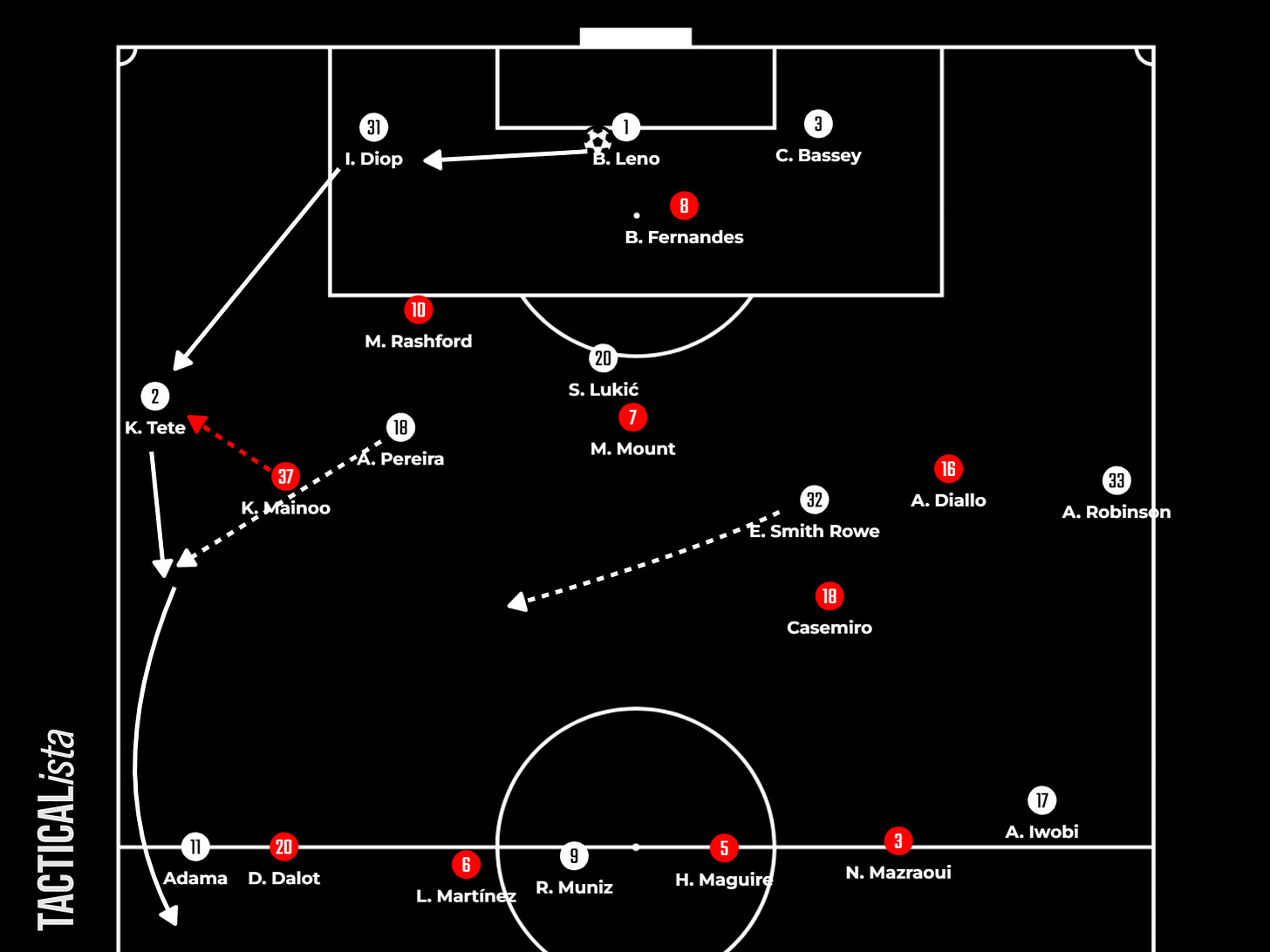
Manchester United’s gap between the lines provided Pereira acres of space to receive, carry the ball, and supply Adama with a pass behind Diogo Dalot.
In the first minute of the second half against the Red Devils, Manchester United defended in a 4-1-4-1 block. Bruno Fernandes’ effort wasn’t enough to deny Diop’s pass to find Andreas Pereira.
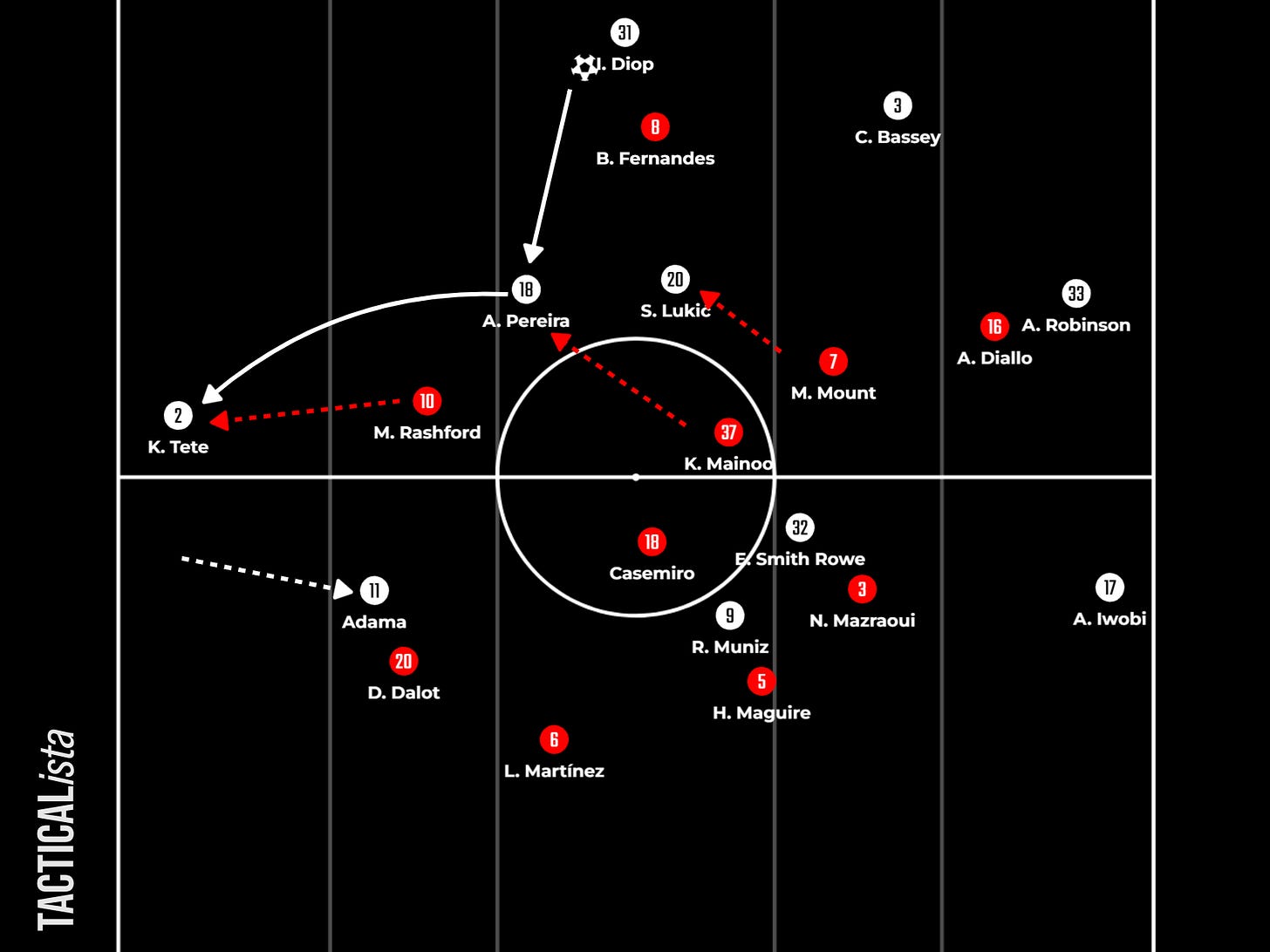


Ahead, Mainoo and Mount were late to jump onto Fulham’s double pivots, with Marcus Rashford occupied by Kenny Tete. Therefore, Andreas Pereira had space in the right to turn and pick out the right-back. Kenny Tete exploited the angle, accessing the inside of the pitch to find Adama Traoré because Rashford's body shape closed off only the backward options. Adama switched the play to the left side, where Alex Iwobi stretched the width of the pitch to allow Smith Rowe to dart down the left-inside channel.
When Marco Silva’s men were pressed, they recycled back, relying on quick ball exchanges and fluid rotations within a 4-3-3/4-2-3-1 mold. According to Understat website, Tottenham is the most aggressive team in the Premier League, allowing the fewest passes (8.33 PPDA) in the opposition half.
However, Fulham's fluidity and position interchanges enabled them to bypass such intense systems. Here, the Spurs apply a man-oriented press, blocking all the passing lanes on Kenny Tete and closing off the possibility of a switch to the left side. An exquisite “Pass and Move” sequence executed by Kenny Tete, Alex Iwobi dropping out, and Sasa Lukić in the right-inside channel unlocked the way up the field.
At the end of the pattern, Alex Iwobi ended up in a right-back spot; Kenny Tete replaced Sasa Lukić inside, whereas the latter situationally filled Iwobi’s advanced position near the flank.
Against the leaders in Anfield, where opponents usually melted down, Fulham stood toe to toe, leveling up to high ceilings and troubling the Reds on their turf. In this example, Liverpool attempts to cut the ball off to make up quickly and turn the score in their favor. Arne Slot’s team raised the intensity of the press. The Cottagers are forced to shift to the left side as Mohamed Salah closes off the passing lane toward Issa Diop. Curtis Jones and Dominik Szoboszlai mark Fulham’s double pivots. Also, Alexander Arnold pounces on Jorge Cuenca. However, he arrived late due to the long distance he had to cover from his spot to reach Fulham’s center-back. As a result, a passing angle is available to access Antonee Robinson, leading to breaking down the Reds press.
As a consequence, Curtis Jones shifts his attention toward the ball holder. That saw Sasa Lukić sneak behind to offer Robinson a free passing option. To keep his way up the field, Alex Iwobi moves wide, dragging with him Joe Gomez and vacating the channel for Lukić to carry the ball. Fulham reaches the middle third.
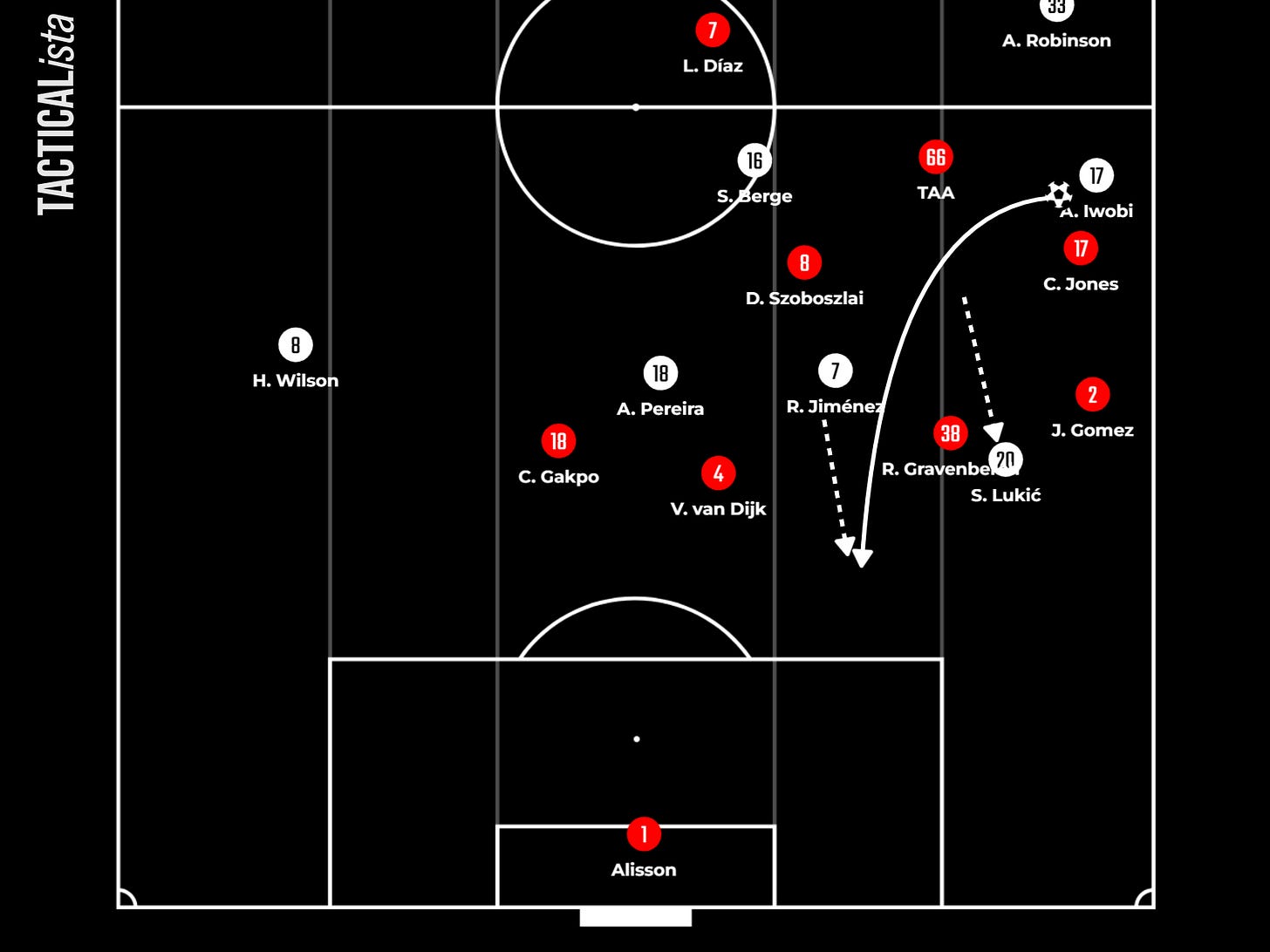
To attain the attacking third, Sasa Lukić passes the ball to Iwobi and continues his run to draw Gravenberch’s attention and obligate him to leave Raúl Jiménez, who swims in space and receives Iwobi’s chip to penetrate Liverpool’s box.
The playmaker drops deep to buildup
Against teams pressing high or laying in a medium shape, Marco Silva used his playmaker to drop deep and step behind the block to connect passes. In addition, when Fulham's number ten moves deeper in the channels, the winger narrows inside high up the pitch, allowing the fullback to advance. That saw the cottagers form a triangle with passing lanes to thread and combine.
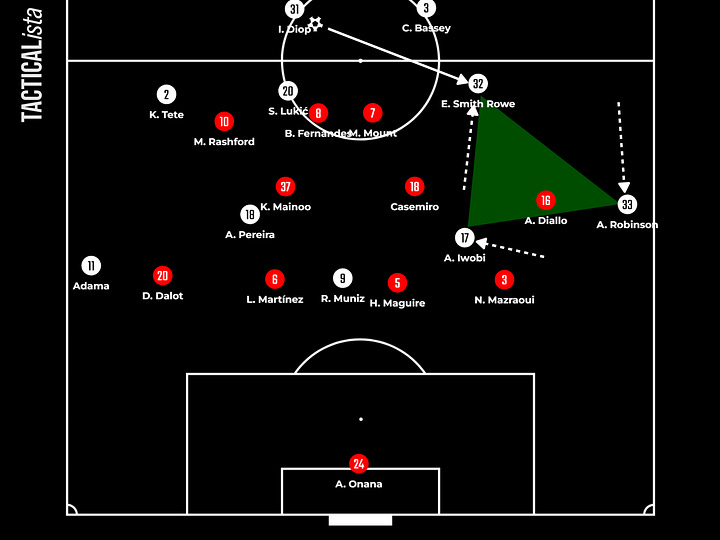

In this example, against Manchester United, the Red Devils sit in a 4-4-2 medium block. Emile Smith Rowe, Fulham’s playmaker, comes deep, allowing the winger Alex Iwobi to indent in the left-inside channel, which vacated the wide corridor for Antonee Robinson to push on. Consequently, the wide triangle eased the trio’s combination. In addition, Smith Rowe stepping behind drags Casemiro with him, and Alex Iwobi inverting moves Kobbie Mainoo across to press. As a result, Fulham has a free man in midfield, Saša Lukić, and Manchester United between the lines gets stretched.
Against aggressive man-to-man pressing waves, Fulham rotations effectively manipulate markers, dragging and pulling them out to produce space for the playmaker to come in. Once he receives the ball, a domino effect occurs, leading to another space appearing up the pitch.
Here, Brighton presses in a man-to-man fashion. Sander Berge and Alex Iwobi, operating at different heights horizontally stretch the Seagulls’ lines. In addition, Iwobi moving across toward the flanks pulls out Mats Wieffer which generates a space for Smith Rowe to dash into and a passing lane for Castagne to find a temporary accessible option.


The moment Smith Rowe received the ball, Harry Wilson indented, giving license for Iwobi to push on in his vacated zone. From Brighton's side, neither Carlos Baleba nor Igor followed Harry Wilson inside, trying to double up on Iwobi. That saw the latter feed the former in the center of the pitch. Wilson and Muniz seized the opportunity to combine around Lewis Dunk and crash the box.
Long balls
When they couldn’t progress on the ground as the press became more intense in the Premier League in recent years, Fulham looked to play long passes targeting the striker to win the aerial duel and rely on players coming from behind or the wingers to narrow inside to collect the second ball. The Cottagers remarkably use long balls in their favor to produce space and create chances. Their pattern in this respect consists of the striker dragging one of the center-backs with him, winning the aerial duel, and playing the ball behind. If the striker can’t strive in the air, he must force his opponent to launch miscued balls wherever the space is created. In the meantime, Fulham wingers tend to narrow inside and sprint behind to collect the second ball if the pass is played down the center. The same is applied to midfielders, as they come late to exploit the space generated behind the opposition’s backline.
In this example against Brighton, Bernd Leno is in a situation where he must launch a long pass as Brighton’s high press blocks off all passing options to progress on the ground. Once Leno clips the ball, Rodrigo Muniz prepares to go in an aerial duel with Lewis Dunk. Meanwhile, Alex Iwobi comes from the second line, heading toward the space behind Brighton’s defense. Moreover, Harry Wilson and Reiss Nelson orientate their bodies to run inside. As aforementioned, Rodrigo Muniz gets in Dunk’s way and stops him from challenging for the aerial duel, leading to the ball hitting his back and swimming into space for Iwobi to collect it and face the goalkeeper.
Against Arsenal, Fulham spent most of the time defending in a 5-4-1 compact, hard-to-penetrate, and solid block. They attempted to hurt the Gunners by relying on counterattacks, manipulating their press to draw them up, generating space behind their backline, and attacking in a self-made transition. Furthermore, long balls were also an outlet for the Cottagers to arrive at Arsenal's defensive third.
Definitely, Arsenal is one of the best, well-drilled teams in Europe in all phases of defense. Few teams could be counted on one hand that could bypass Arsenal's high press, and it is so overwhelming for the opponents to break down Mikel Arteta's team when they shut down their lines in a medium or low block. In addition, they are one of the most aggressive teams in the air, as they are ranked sixth in terms of aerial duels won, averaging a rate of 51.8%. Therefore, opponents must be near perfection in possession to snatch something against them.
Fulham was one of those teams that took out a point from Arsenal. Here, the goalkeeper tended to target the striker, Raúl Jiménez. However, William Saliba pushes up before Jiménez, anticipating the ball landing area. Fulham’s wingers narrow inside as Alex Iwobi advances behind Arsenal's defense and Adama Traoré indents smartly interpreting the second ball. Fulham makes it to Arsenal’s third, putting Antonee Robinson in a crossing position.
High-pressing teams often deploy their front players between the opposite center-backs and fullbacks, curving their runs from outside to inside. This closes off the passing lane and forces them to play long passes or drive them to a trap to regain the ball back up the field.
As a counter-movement, the opposition tends to clip a short, long ball over to the fullback. As a reaction, the pressing team has to commit a player to prevent an easy progression. Usually, it plays in the opposition’s favor as the distance to cover and jump onto the fullback is longer, which offers time and space for the ball holder to take action.
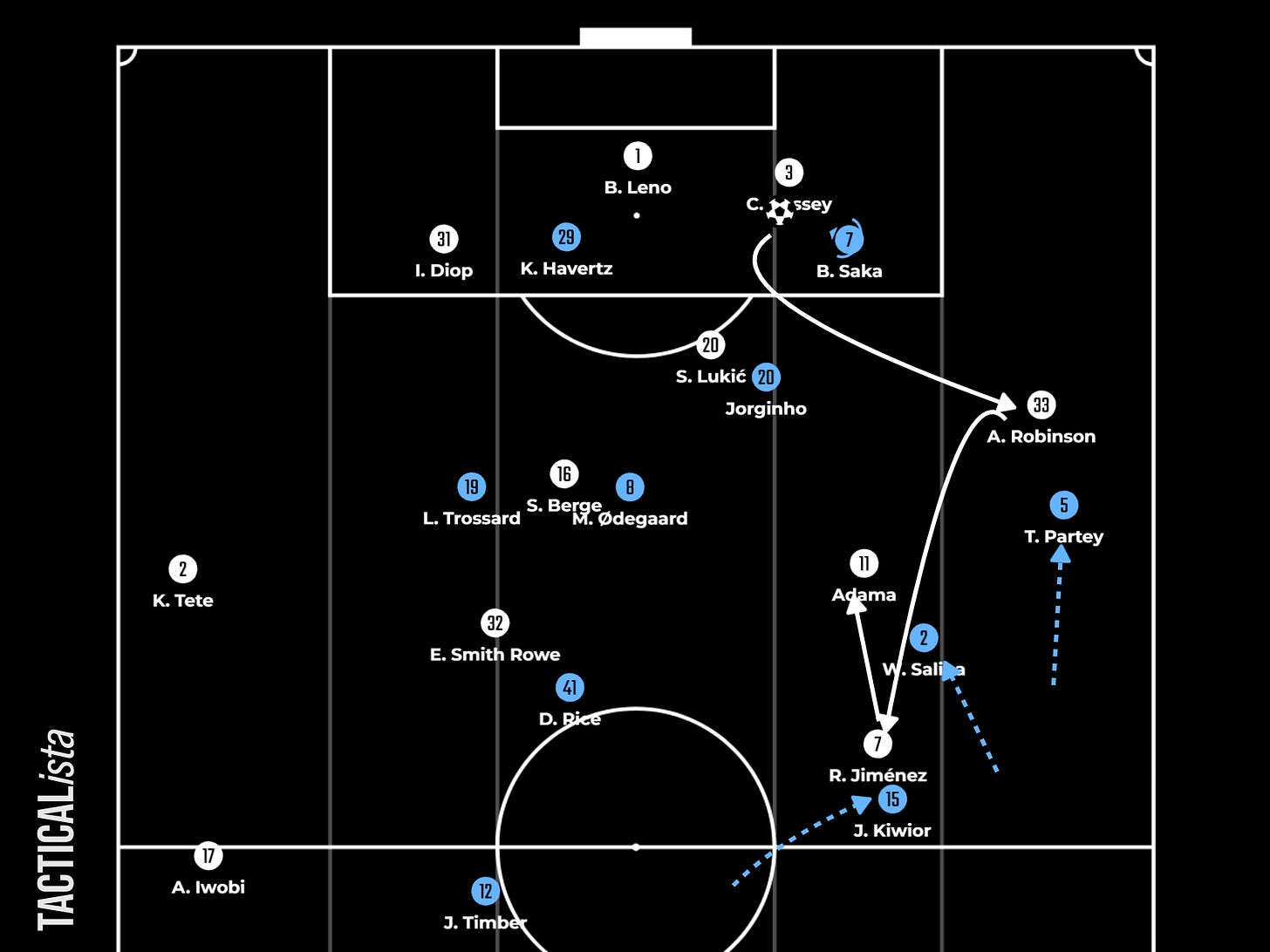
In this sequence, Arsenal clogs the central corridor as Jorginho jumps onto Sasa Lukić, whereas Martin Ødegaard and Leandro Trossard besiege Sander Berge. Declan Rice keeps tabs on Emile Smith Rowe in the middle of the park. Bukayo Saka and Kai Havertz block off the passing angles to access the wide areas. Not only that, but Saka presses Calvin Bassey from his strong foot, obligating him to use his right foot. Nonetheless, Bassey clips a short-range long pass across Saka’s body toward Antonee Robinson.
Thomas Partey vacates his spot to push on and pounce on Robinson, William Saliba backs up the press following Adama Traoré, and Jakub Kiwior covers behind Saliba. However, as aforementioned, it takes time to jump over from the backline to arrive and prevent Robinson from finding options ahead. William Saliba's retreating frees Adama to receive Raúl Jiménez header. Fortunately, Ødegaard slides back to intercept Adama’s pass into Smith Rowe.
Against Liverpool, long passes were a staple to exploit Liverpool’s backline. Andreas Pereira and Raúl Jiménez played a crucial role in deceiving the Reds’ defenders to pull them out of positions and take advantage of the space vacated by such an act.
We see here that Liverpool presses high up the pitch in a 4-1-4-1 fashion. Andreas Pereira drops out between the lines, dragging Virgil Van Dijk with him. That leaves Liverpool's defense in a numerical match. Once Bernd Leno clips the long ball, Alex Iwobi inverts inside behind Joe Gomez, who loses the aerial duel against Raúl Jiménez. Iwobi’s miscontrolling the ball denies his opportunity to drive forward in space.
Three minutes later, Andreas Pereira's deeper movements lured Van Dijk to track him up top, leaving his team in a dire situation. Raúl Jiménez shifted across toward the evacuated space by Van Dijk. That saw Joe Gomez following Fulham’s striker and emptying his space for Harry Wilson to tuck into. Raúl Jiménez headed the ball into Wilson’s feet to burst past Joe Gomez and flick a lateral pass to the coming from behind Andreas Pereira.
Strikers used as an outlet
Fulham also recalls the strikers as targets to take the Cottagers up top and bypass heavy pressing waves. In this example, Smith Rowe dropped deep as a situational left-back, allowing Antonee Robinson to push on. Brighton transitioned from a zonal to a man-oriented marking as Fulham's backward passes triggered the Seagulls to initiate the press. Therefore, once the goalkeeper received the ball from Calvin Bassey, O’Reilly directed the play to the right side, aiming to trap Fulham near the touchlines. Brighton swarmed, locking Fulham’s left side.

However, Iwobi coming deep, dragging Weiffer with him, and Harry Wilson hugging the touchlines expanded the right-inside channel for Rodrigo Muniz to dart into.

Resisting Lewis Dunk's attempts to unbalance him, Rodrigo Muniz got away from Dunk with a flick over into the right as Wilson tucked inside, creating separation between his marker. A long, accurate switch found Reis Nelson on the left side, arriving at Brighton's final third.
Little dinks to the fullbacks proved a great asset for accessing the wide channels. From there, the fullbacks often take advantage of time, as they are momentarily free before the opposite fullback or the winger jumps on. This buildup sequence highlights it.
Luis Diaz and Mohamed Salah block off the passing lane into the center-backs, while Fulham’s double pivots are occupied by Darwin Núñez and Dominik Szoboszlai. Central access is shut down. As a reaction, Bernd Leno clips a ball over Salah to find the left-back, Antonee Robinson, who spots Rodrigo Muniz dropping deep and resisting Van Dijk to lay the ball off to Alex Iwobi. The latter switches the play to Smith Rowe, who doesn’t weigh his pass to set Harry Wilson in space.
Offensive transitions and counterattacks
Fulham's squad contains one of the most athletic, sonic players in the Premier League. Also, they blend pace with a good passing range, two key components to transition or to counterattack. Marco Silva’s versatile playing philosophy is tailored to players’ attributes that enable them to shine in transitional phases of the game.
Here, Fulham sits in a 4-1-4-1 medium block, with only the striker Raúl Jiménez positioning ahead of the ball. Alex Iwobi noticed James Maddison’s intention to pick out Timo Verner. Therefore, he made a few small steps to anticipate Maddison’s pass to Timo Verner and collected it. As a result, Fulham went into transitional mode. Raúl Jiménez attacked the right side to drag Tottenham’s center-backs with him and vacate the central corridor for Iwobi to drive forward.
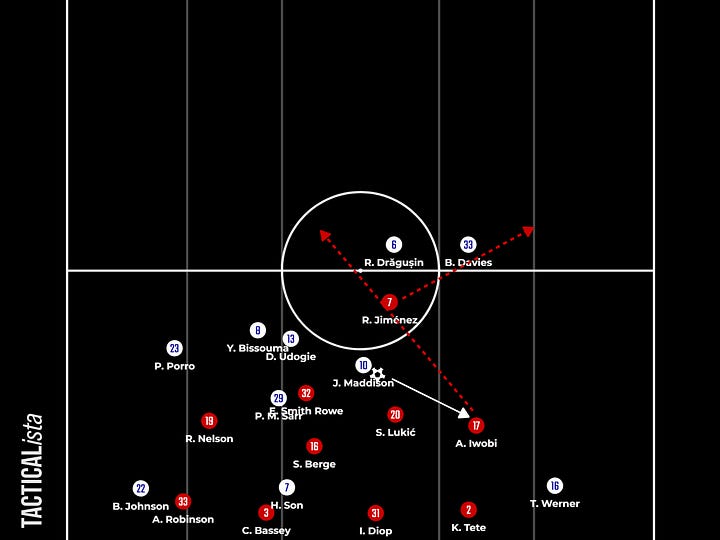

Radu Drăgușin and Ben Davies shifted their bodies toward the ball holder, leaving Jiménez free in space. Once Iwobi felt himself caged in the middle of four Spurs players, he spotted his teammate’s position at the edge of the box. However, his heavy pass denied the possibility for Fulham’s striker to face the goalkeeper.
Also, Fulham's 4-4-2 compact shape in a medium block supports and increases their probability of hurting opponents in counter-attacks. Usually, teams tend to make their fullbacks push up in possession to afford some sort of numerical superiority on the last line. Nevertheless, such risks have their repercussions, as the space vacated by the fullbacks could tempt the opposition to exploit in counters.
Advancing the fullbacks against Fulham isn’t a smart choice to opt for, given the weapons they have to strike from a deep regain. Pace, adept movements, clean passes, and accurate cross-delivery are the ingredients to execute a counter-attack. Fulham’s squad is built upon these characteristics.
According to Opta, Fulham averages one shot per game from fast breaks, the fourth-best rate after Liverpool (2.1 shots), Chelsea (1.5 shots), Nottingham Forest (1.36 shots), and Tottenham, Newcastle, and Bournemouth are joint the same shots from fast breaks (1.14 shots).
In this example, Alexander Arnold inverts forward. Luis Diaz attempts to feed Salah; however, Antonee Robinson cuts the pass off. Alex Iwobi's inside position allows him to pin Arnold and enable Robinson to race into space. To put some context, Andy Robertson was sent off earlier in the game. Arne Slot instructed Gravenberch to operate as a right-back when Alexander Arnold pushed forward. That’s why Gravenberch is facing Robinson down the left side.

Instinctively, Ryan Gravenberch isn’t cultivated to fill a fullback position and does not possess similar defensive traits. As a consequence, body orientation and timing his interventions to block an opposite fullback or winger’s cross aren’t going to be his cup of tea. Usually, midfielders are used to facing opponents with their backs oriented toward their own goal to protect central spaces. Defending wide areas requires specific characteristics, which Gravenberch doesn’t have. That’s why he didn’t take into consideration the probability of Robinson playing a cutback, and he just limited himself to leaping and stretching his right leg to intercept the cross.
Given the difference in personnel, strengths, tools, player profiles, and coaches' philosophies, Fulham sat in a 5-4-1 medium/low block from an away game against Manchester City. It would have been nothing short of insane had Marco Silva gone toe-to-toe against Pep Guardiola's ideas. Thus, hurting the Citizens on the counter and racing in space behind their advanced backline might balance the scale.
In this scene, Manchester City pins the Cottagers, pushing them backward to defend their box. Fulham nullifies distances between the lines to funnel the Citizens sideways. Guardiola’s side opts for a 3+1 shape for rest defense duties. Fulham maintains only two cogs in Adama and Raúl Jiménez ahead of the ball to strike once it is cut off.
On the left side, Alex Iwobi and Andreas Pereira double up on Grealish, forcing him to play backward. Raúl Jiménez is well-placed to collect loose balls and kick into full gear. It’s also worth noticing that Manchester City's uncoordinated rest defense eased Fulham’s way to counterattack. In detail, Manuel Akanji is well-positioned to counter-press Adama Traoré and cover the inside channel. Rúben Dias is in full readiness to pounce on the striker Jiménez, but Gvardiol’s subsequent action tears apart City’s rest defense structure.
Let’s dissect Fulham's counter-attack sequence.
If Gvardiol maintained his position on the left-inside channel, Rúben Dias and Mateo Kovačić would swarm around Jiménez to obligate him to play backward or go wide. And Gvardiol would mark Andreas Pereira and wait for the rest to recover positions, delaying Fulham’s counter-attack. Nevertheless, it was totally the opposite.
Gvardiol misinterpreted the situation, jumping blindly onto Jiménez and leaving himself open to be dribbled. As a reaction, the latter moved against the former’s body direction, momentarily blocking his ability to re-adjust. That opened up the wide channel for Jiménez to initiate the break. Behind, Rúben Dias was forced to cover large spaces against Alex Iwobi and Andreas Pereira. As a consequence, he was outnumbered, and a domino effect took place. Manuel Akanji shifted across to prevent Iwobi from taking further action. That freed Adama at the edge of the six-yard box. However, he blasted the ball over.
Chance creation
Wide rotations and combinations
Marco Silva tends to design a system for his team to afford Antonee Robinson time and space to feed his teammates with crosses and cutbacks toward the box. Similar situations occur on the left side, but Adama Traoré is the cog responsible for crosses’ delivery, counting on his ability to dribble past opponents using his pace. Fulham’s chance creation is built upon wide rotations and combinations to manipulate the opponents down the channels with quick ball exchanges, pulling defenders out of their positions to generate an optimal scenario and a good-quality crossing position for Antonee Robinson or Adama Traoré.
In this example, Fulham regained the ball in the middle third, so Tottenham immediately formed a 4-1-4-1 medium block. Emile Smith Rowe received the ball from Sander Berge, turned with it, and shielded it with his hand to get rid of James Maddison and drive forward. Brennan Johnson was attracted by Sander Berge in case Smith Rowe passed the ball back.
As a result, Antonee Robinson was left free down the left flank as Reis Nelson narrowed inside, pinning Pedro Porro and delaying his shift toward Robinson. That provided the latter with a small space to cut the ball back toward the penalty spot. Raúl Jiménez drew Tottenham’s line backward for players coming late from behind to strike, as it was supposed for Reis Nelson to be there.


In this case, against Liverpool, Trent Alexander Arnold is outnumbered by the advancing Robinson and the inverted Alex Iwobi. The latter is accessible for Cuenca to pick out between the lines, as Dominik Szoboszlai is late swinging across. Raúl Jiménez pins Gravenberch in the center so the latter cannot commit to cover behind Arnold, who is attracted by Iwobi’s movement. He was caught between two minds.
Arnold's positional unawareness and over-commitment make his back vulnerable to wide combinations between Iwobi and Robinson. Thus, once the former receives the ball, Arnold freezes in his place, leaving room for Robinson to roam in space and drive forward to square the ball to Harry Wilson, who puts it outside.
Against Chelsea, Marco Silva played with three center-backs in the defense, giving Antonee Robinson the license to hug the touchlines high up the pitch. The wide center-back Calvin Bassey tended to complete Fulham’s triangle ribs on the left side.
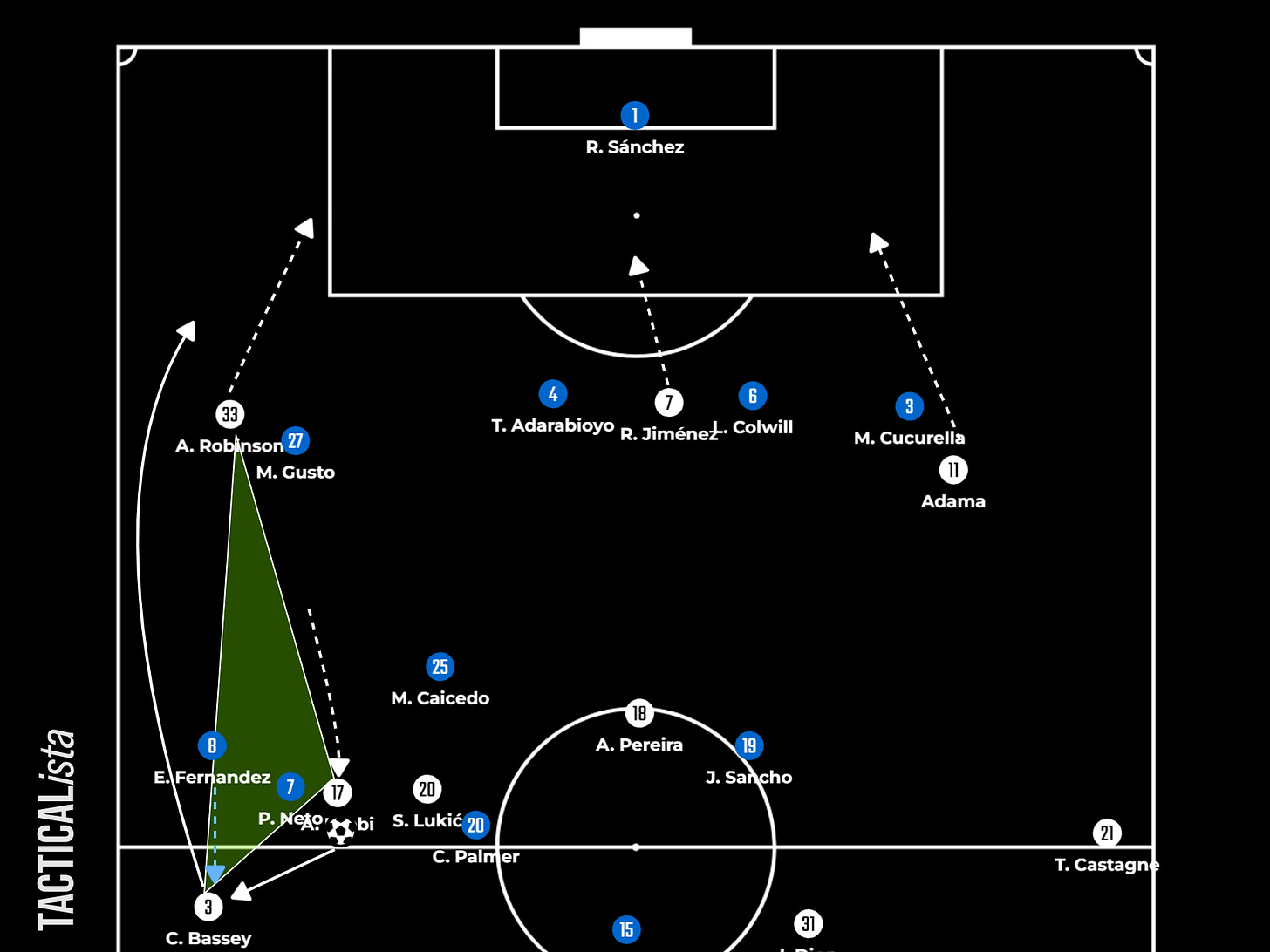
The same pattern repeated itself. Alex Iwobi dropped in to link with Calvin Bassey down the left-inside channel. Enzo Fernández didn’t close properly the passing angle on Fulham’s left center-back. As a result, Bassey curved the pass behind Malu Gusto to the runner, Antonee Robinson. Fulham aimed to generate good-quality situations for Robinson to cross the ball through combinations and rotations.
Direct attacks
One of Fulham's facets to create chances is baiting opponents to press, drawing their block up, and generating artificial transitions. Fulham does everything at optimal speed to cut through opponents.
The Cottagers blend direct attacks with buildup attacks, as they are close to the league’s average in both metrics.
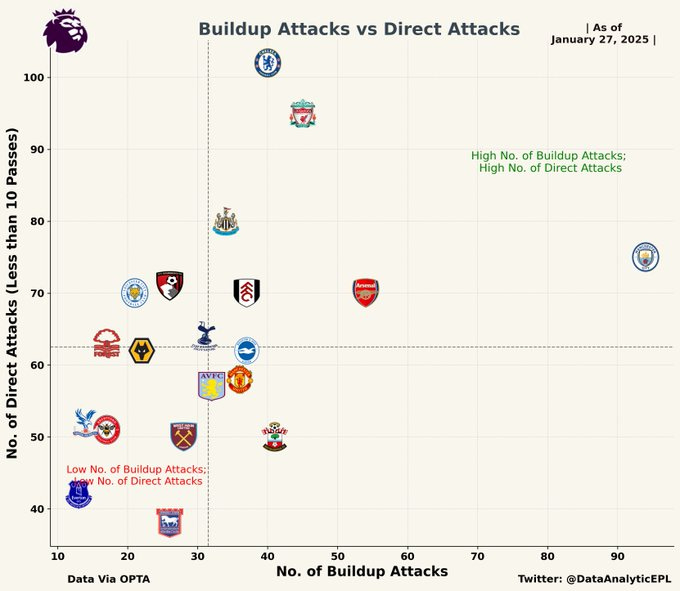
For instance, against Tottenham, Fulham constructed their attacks with a 5-2 shape in which the goalkeeper took position between the center-backs. As Tottenham locked the central corridor, the Cottagers opted for the left side to progress.
Pedro Porro jumped onto Antonee Robinson as a reaction, whereas Radu Drăgușin covered behind and marked Reis Nelson. Emile Smith Rowe moved wide with Pape Sarr not following him. That saw Reis Nelson drop down the left-inside channel to connect as a third man and release Smith Rowe in space behind Drăgușin who was drawn up the field.
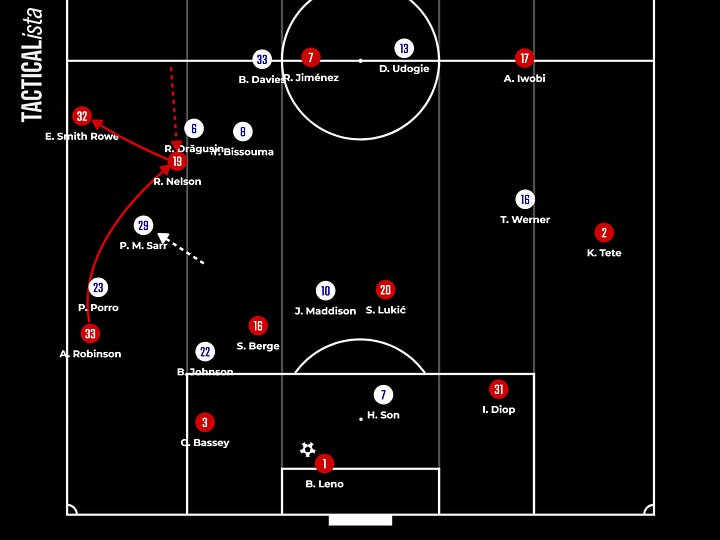

Fulham arrived at Tottenham’s final third with four players against four. Smith Rowe fed Raúl Jiménez, who outnumbered Destiny Udogie with Alex Iwobi as Pedro Porro was still up the pitch, which forced the rest of the defense to shift across. Jiménez laid the ball off to Reis Nelson, then to Iwobi, who finished the attack with a shot on the woodwork.
In Marco Silva’s system, Alex Iwobi is a Joker who can fill any position and afford the same quality.
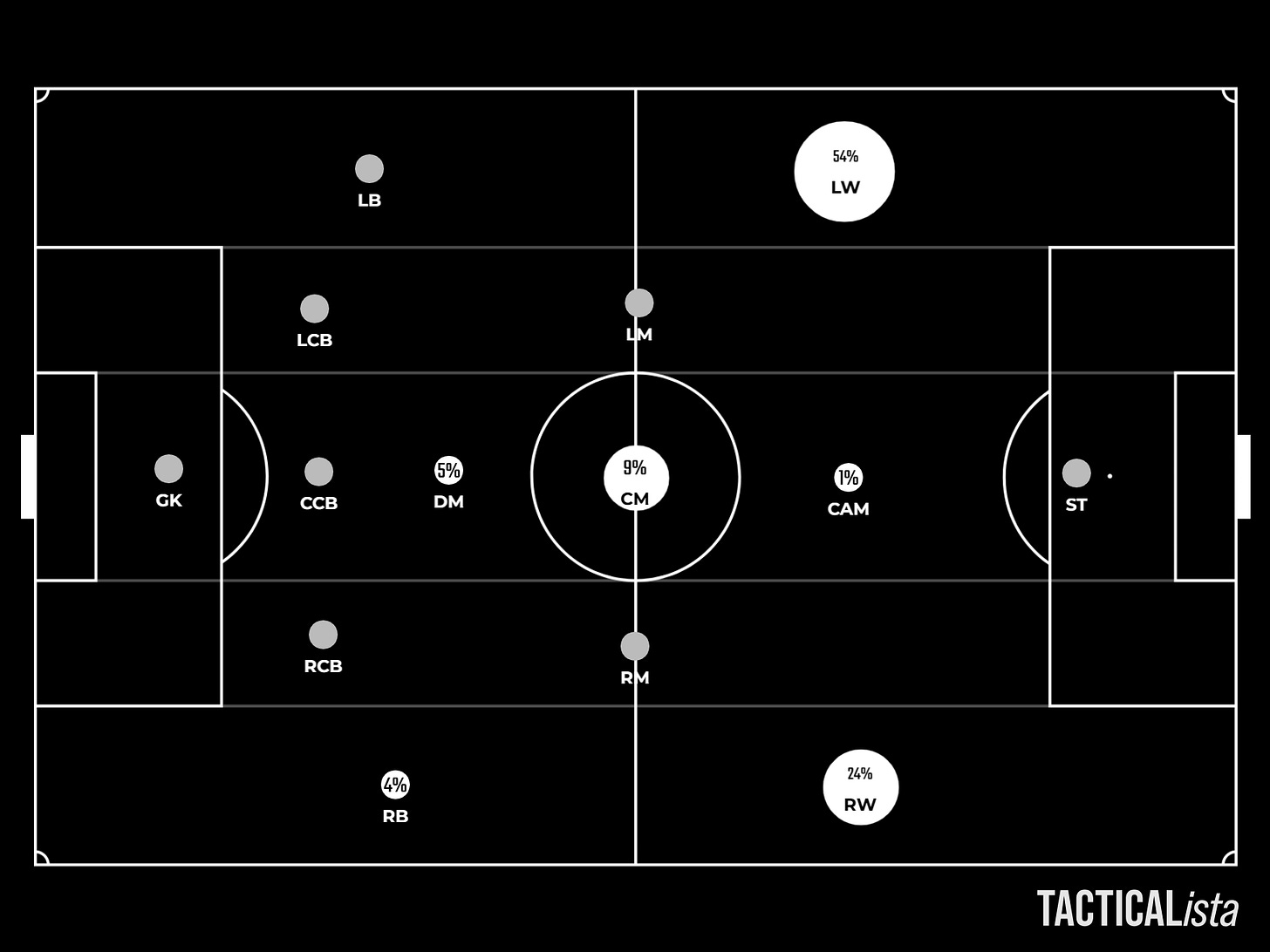
It’s scarce in football to find this kind of player who can morph into whatever position and role he asked to operate in. Wise positioning to free space for teammates, smart reading of the game, physical presence, and the ability to hug the touchlines or play inside are what Iwobi can offer as a versatile player.

In this example (above), Alex Iwobi shifts across to evacuate the central channel and allow Harry Wilson to indent. Estupiñán stands still to assume the responsibility of Alex Iwobi; however, this isn’t the case for Mats Wieffer as he has to instantly adjust his body and switch his attention toward Harry Wilson. Obviously, it takes him time to do so. That saw Wilson supply Reis Nelson with a pass over that lands behind Van Hecke. Reis Nelson stutters, enabling Brighton to rearrange.
Press to create
Fulham isn’t a team that presses the opponents high up the pitch, as they are ranked 12th in terms of passes allowed per defensive sequence (11.44 PPDA) according to Understat. However, when they press the opposition in their defensive third, it turns to gold.
Fulham scored their first against Brighton by suffocating the Seagulls near their box, regaining the ball and immediately scoring. That goal came from Alex Iwobi, who operated as a pivot in that game. Here, Brighton constructs their attacks with three in the backline, with Carlos Baleba and Mats Wieffer in front of them. Fulham transitions from a 4-4-2 zonal medium block to pouncing on Brighton’s players to force them to play backward. Emile Smith Rowe engages with Carlos Baleba, Rodrigo Muniz heads toward Lewis Dunk, and Alex Iwobi keeps tabs on Mats Wieffer. Harry Wilson jumps onto Igor and runs toward the goalkeeper, blocking off the angle to close the access to the wide area.
In the middle of the sequence, Alex Iwobi spots that the goalkeeper has two outlets to pick up. The first is to play long, and the second is to feed Carlos Baleba to play a bounce pass to Igor due to his temporary availability as Emile Smith Rowe is distant. Rodrigo Muniz and Alex Iwobi shrink the space around Baleba. The goalkeeper misses his pass, so Iwobi collects it and turns it inside the net.
Antonee Robinson
Fulham counts on crosses to create goal-scoring opportunities. Marco Silva’s team opts for the flanks to progress from the middle third to the attacking third, executing wide combinations and rotations between the winger, playmaker, pivots, and fullback. The Cottagers accumulate a rate of 72.8% in this respect as the sixth-most team relying on wide channels to arrive at the final third.
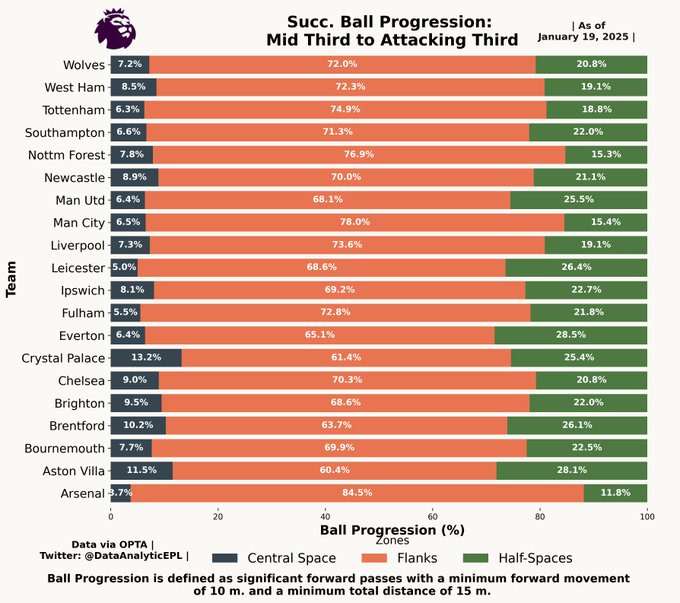
Quick passes in wide areas accompanied by overlapping and underlapping movements from Antonee Robinson tend to yield a crossing position for the latter to deliver crosses toward the box. According to Fbref, Fulham leads the table in this regard with 22.5 crosses per game.
Antonee Robinson is one of the main reasons behind Fulham's reliance on crosses. Firstly, Marco Silva recalls such an attacking weapon because Robinson’s accuracy in executing in such situations enables the team to create more chances and rack up numbers.
Secondly, the system is the key secret. In the 2023/24 season, Fulham sat in a 4-3-3 shape with the central midfielders joining the front three and working on rotations to generate chances, with Joao Palinha as a single defensive midfielder providing cover and protection behind the eights. After he departed Fulham landing in Bayern Munich, Marco Silva switched to the 4-2-3-1 formation on paper with a significant adjustment and changes to keep five players in the attack and maintain the approach based on rotations.
Marco Silva made his winger Alex Iwobi operate in more inverted roles down the left-inside channel, leaving room for Antonee Robinson to surge forward down the left wide corridor. By doing so, Marco Silva compensated Joao Palninha’s leaving and maintained five cogs attacking the opposition.
The new playing system already made Antonee Robinson amass numbers. He joined the club of elite creators that contains Bukayo Saka, Mohamed Salah, Kevin De Bruyne, Jeremy Doku, Jacob Murphy, and Savinho. Antonee Robinson registered 0.41 assists per game, the seven-best ratio after the six aforementioned players, overriding his expected assists (0.14 xAst) by a difference of 0.27. His passes into the penalty area jumped from 1.27 passes per game in the 2023-24 season to 2 passes per game in the 2024-25 season.
But most importantly, his possession statistics skyrocketed due to the offensive work falling under his responsibility. His progressive carries went up from 2.73 to 3.5 carries per game. Furthermore, his carries into the penalty area got multiplied four times, going from 0.25 carries in the 2023-24 season to 1 carries per game in the 2024-25 season.
Here, Antonee Robinson retreated to defense to mark Mohamed Salah. Once Harry Wilson switched the play to Alex Iwobi, Robinson, in the blink of an eye, created separation from Salah and burst forward sonically. As a result, Trent Alexander Arnold was outnumbered on the left. As a reaction, the latter didn’t directly engage with Iwobi, waiting for Antonee Robinson to overlap. However, Alex Iwobi’s pass weight delayed Arnold and gave the flying Robinson the optimal space to cross the ball into Andreas Pereira’s feet toward the back post zone.
Fulham Goal Against Arsenal, A Depiction Of Fulham’s Identity
Fulham's goal against Arsenal saw the Cottagers recall all the possible ways and outlets: off-ball movements, ball circulation to maneuver the Gunners’ intense and venomous press, and long ball to the striker to afford the players space and a tiny amount of time to look for options and make the action.
Arsenal here is man-marking Fulham players except for Sander Berge as Kai Havertz is locking the vertical passing lane to access Fulham’s defensive midfielder. Moreover, Declan Rice operated in close proximity to Berge to pounce on if the Cottagers found him. The solution is for Alex Iwobi to drift inside and come deep, giving Issa Diop a free option down the right-inside channel. Iwobi then lays the ball off to Sander Berge. Nonetheless, Arsenal's return to camp in a medium block prevents the Cottagers from progressing up the field. Fulham is forced to recycle back.
Emile Smith Rowe drops off to the backline, dragging Leandro Trossard with him. As a result, the midfield is emptied and vacated for the striker Raúl Jiménez to dash into and collect Bernd Leno's long pass. Furthermore, the right side is free to be exploited by Kenny Tete as he is unmarked and has acres of space because Alex Iwobi tucks inside, pulling Jurrien Timber out of his position.
Raúl Jiménez controls the ball, hands it down to Smith Rowe, and sprints in space behind Kiwior. Smith Rowe feeds Kenny Tete who prods the ball onto Jiménez. The latter puts his name on the scoresheet.
The goal translates Fulham's ability to patiently build up attacks, relying on multiple mechanisms and synchronized patterns to yield space and find free men. They wonderfully manipulate Arsenal’s press until the gap appears within the Gunners’ side, and they immediately hurt Mikel Arteta’s boys.
Brilliant in defense
Defending crosses
Crosses are one of the most used outlets to create a chance in football. Therefore, being well-drilled in defending, blocking off, and preventing the opposition from taking advantage of such situations gives every team the edge in keeping the ball away from the net and denying the possibility of conceding a goal.
Here, Arsenal has five players behind the ball for rest defense missions; Gabriel Martinelli holds the ball on the left, and four players are waiting for his delivery inside the box. Kenny Tete and Harry Wilson double up on Gabriel Martinelli trying to block off his cross. However, Kenny Tete's effort isn’t enough to do so.
Firstly, let’s take a look at which zones need to be occupied when defending a cross. Mainly, the central area in front of the net presents a higher threat if the cross is to be delivered there. Thus, it is necessary and paramount to cover these zones.

In this example, Fulham covers all the six zones. Issa Diop man-marks Martin Ødegaard around the near post, Calvin Bassey engages with Kai Havertz at the edge of the six-yard box, and the far-side fullback, Antonee Robinson, protects the back post area where Bukayo Saka operates.
Defensive midfielder Sasa Lukić shields the penalty spot, keeping his eyes on Declan Rice. Andreas Pereira and Alex Iwobi are positioned in front of Diop and Robinson to prevent Jorginho or Thomas Partey from shooting or taking action if Martinelli picks them out. The latter curls his cross into Bukayo Saka. However, Robinson clears the ball away, and Iwobi blasts it outside the box.
Staying in the same game, after six minutes of the scene highlighted above, Arsenal attacks from the side through Gabriel Martinelli. The Cottagers set up similarly to defend the cross, but a little deeper due to Jurrien Timber's position.
Fulham players are distributed in the three central zones similar to the aforementioned scene, with Sasa Lukić covering the penalty spot. Jurrien Timber enters the box and points to Martinelli to play the ball back to Jakub Kiwior. That draws Sander Berge’s attention as he prepares to jump over and allows Martinelli to find Timber behind Kenny Tete’s back. Despite Jurrien Timber’s qualitative position, Fulham can further the threat away from their goal.
To elaborate, Issa Diop pushes deep between the goalkeeper and Gabriel Jesus to prevent the latter from meeting the ball if Timber plays it across. Also, what is more eye-catching is Sasa Lukić's position between Mikel Merino and Martin Ødegaard, keeping himself close to both to react to Timber’s cutback.
Compact Medium block
Fulham’s Marco Silva isn’t a high-pressing team of the likes of Tottenham, Arsenal and Bournemouth. According to Opta, they sit in the 10th rank in terms of passes per defensive action (10.079 PPDA). The Cottagers are willing to camp in a medium block in which players’ movements are well coordinated to cover and protect the central areas of the pitch, crowding out those zones and compacting the lateral and vertical distances to a minimum.
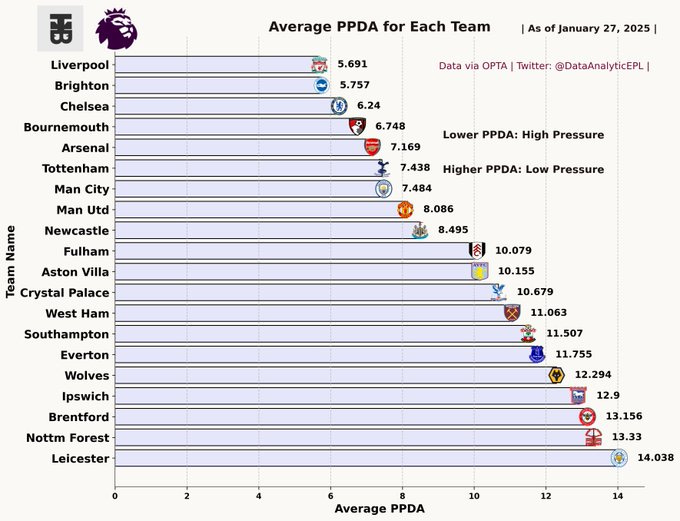
Also, when defending in a medium block, Fulham moves in sync laterally toward the ball side, nullifying the probability of a switch to the far-side opposition players. The front cogs jump onto ball holders to force them into playing backward, assuring that their vacated space is well-covered and shielded by another teammate behind.
Let’s dive into examples.
Here, Fulham sits in a 4-4-2 medium block. Cody Gakpo finds himself in a situation where he just cannot play forward as spaces are closed off, and Liverpool players are being shut down. As a result, the Reds recycle back. Once the ball goes to Virgil Van Dijk, Andreas Pereira moves up toward the Dutch center-back, whereas Raúl Jiménez takes charge of Curtis Jones behind. Van Dijk can only pick out lateral options. In the last line, Fulham’s center-backs closely monitor Mohamed Salah and Luiz Diaz, maintaining proximity to shrink the operational domain they may have should the ball go into their feet.
As the ball goes sideways to the right, Andreas Pereira and pick out Raúl Jiménez invert roles. Jiménez pushes up to press Gravenberch, Pereira stays with Curtis Jones, Alex Iwobi pounces on Joe Gomez, and Sasa Lukić sweeps behind Iwobi.
Notice how Fulham swings their block across the pitch, allowing the pendulum effect in order to close down the ball side.
As a consequence, Liverpool is pushed to the wall to return the ball to their goalkeeper.
Against heavy possession-based teams that contain players able to dominate the game by keeping the ball for long spells of the caliber of Manchester City and Arsenal, Marco Silva lines his team up in a 5-4-1 low/medium block, instructing his winger, usually Alex Iwobi, to drop into the backline. That secures a defense of five players to match the opposition numbers in the last line.
From an away defeat against Manchester City in October 2024, Fulham sat in a 5-4-1 block against a 3-4-3 diamond of Pep Guardiola’s side. In this example, once Grealish receives the ball, Alex Iwobi jumps onto him, and Kenny Tete sweeps behind. In the second line, Sasa Lukić sticks to İlkay Gündoğan, and Raúl Jiménez is ready to press Mateo Kovačić should Grealish pick him out. As a result, all passing options around the ball holder are shut, putting him in a situation where he vehemently has to play backward. That triggers Fulham’s near-ball side player to charge forward, forcing a sequence of backward actions.


Once the ball goes to Manuel Akanji, Fulham’s second line besieges Manchester City defensive midfielder Mateo Kovačić, swarming should Akanji opt for feeding him. A miscued pass under a heavy wave of pressure set the way for the Cottagers to transition.
Counterpressing
Counterpressing is another way of immediately regaining the ball for the Cottagers after losing it. Marco Silva tends to clog the central corridors, deploying more players to hunt in packs for an instant ball regain. Depriving the ball holder of spare players and surrounding him leaves no way to escape Fulham’s counter-press.
In the seventh minute of their game against Leicester City, the Foxes regained the ball after loose touches from Andreas Pereira at the edge of their box. Leicester looked to break through in a counter. However, the Cottagers showed a high level of squeezing commitment, applying a tense wave of pressure on the ball.
Saša Lukić, Antonee Robinson, Alex Iwobi, and Emile Smith Rowe formed a quadruple around the ball, with Lukić engaging aggressively to minimize Fatawu’s functional field. Behind, Calvin Bassey and Issa Diop maintained the numerical superiority around Jamie Vardy and were ready to neutralize any potential transition.
Takeaways
As we reach the final words of this analysis, it’s worth saying that Fulham troubled the big teams in the Premier League 2024/25. Depriving Liverpool of two points at Anfield isn’t usually achievable, especially against this Arne Slot version. Sitting in a 5-4-1 block, protecting the box for the entirety of the game against the gunners without giving away spaces for Arteta’s men to exploit could be done only by a strong, compact, and well-drilled team. In addition, Marco Silva went to the Etihad, created more chances in terms of expected goals (2.6 xG), and they were too close to grabbing the win had Adama Traoré had his shooting boots on. Chelsea also didn’t make it alive on Christmas day versus the Cottagers, who turned the table ahead, making the Blues title’ contending hopes fade away.
Setting the balance between attack and defense, dancing in the center and stretching the width of the pitch, blending between an adopted defined ideology and tailoring it to befit each game’s demands: LADIES AND GENTLEMEN, THIS IS MARCO SILVA.
If you’re enjoying what we are producing—whether it’s an analysis, scouting, or opinion—Please subscribe, leave a comment, and drop a like. It helps us know that people out there value the work, and it boosts us on the Substack algorithms.
“Sharing knowledge is not about giving people something, or getting something from them. That is only valid for information sharing. Sharing knowledge occurs when people are genuinely interested in helping one another develop new capacities for action; it is about creating learning processes.”~Peter Senge




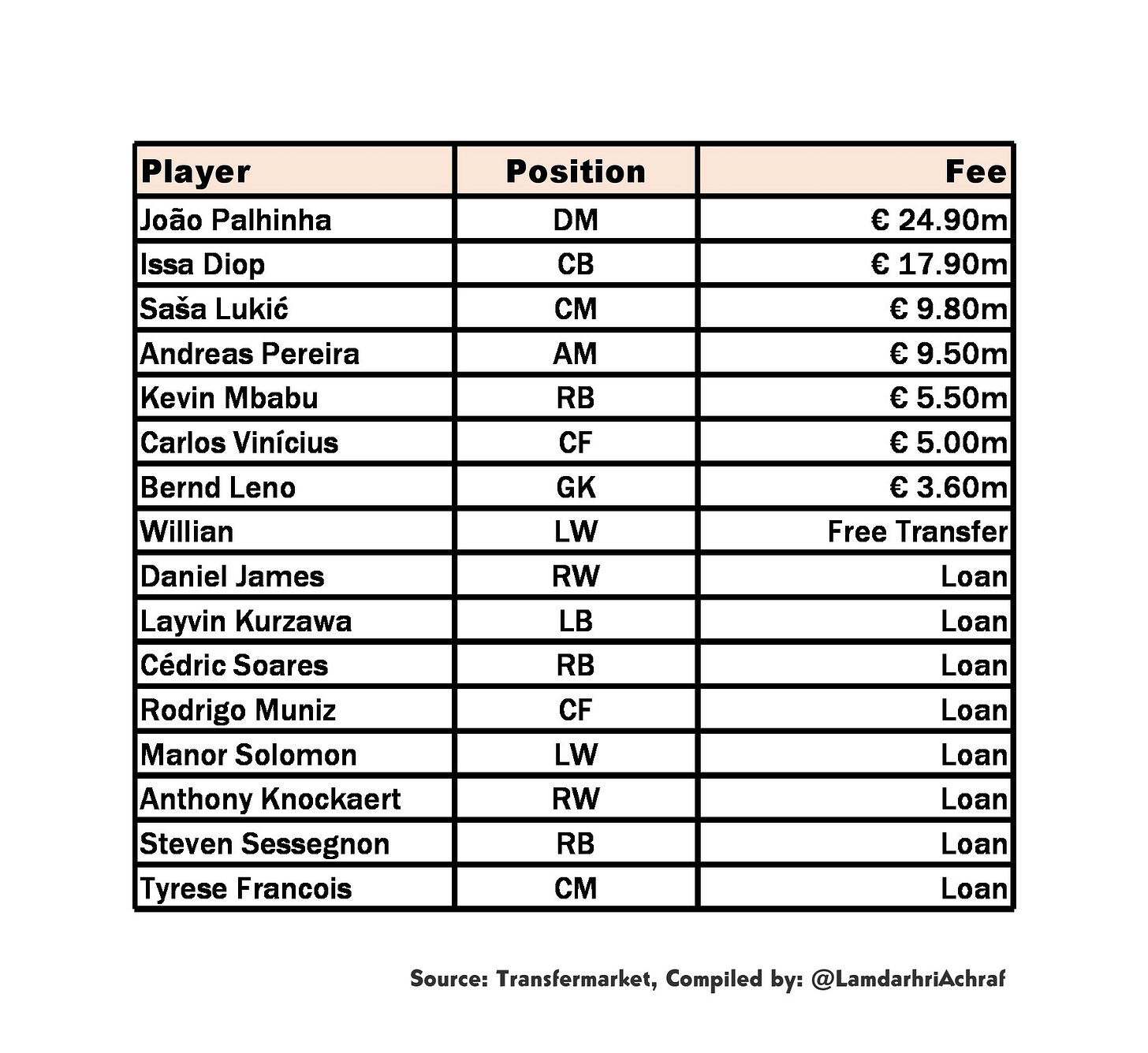
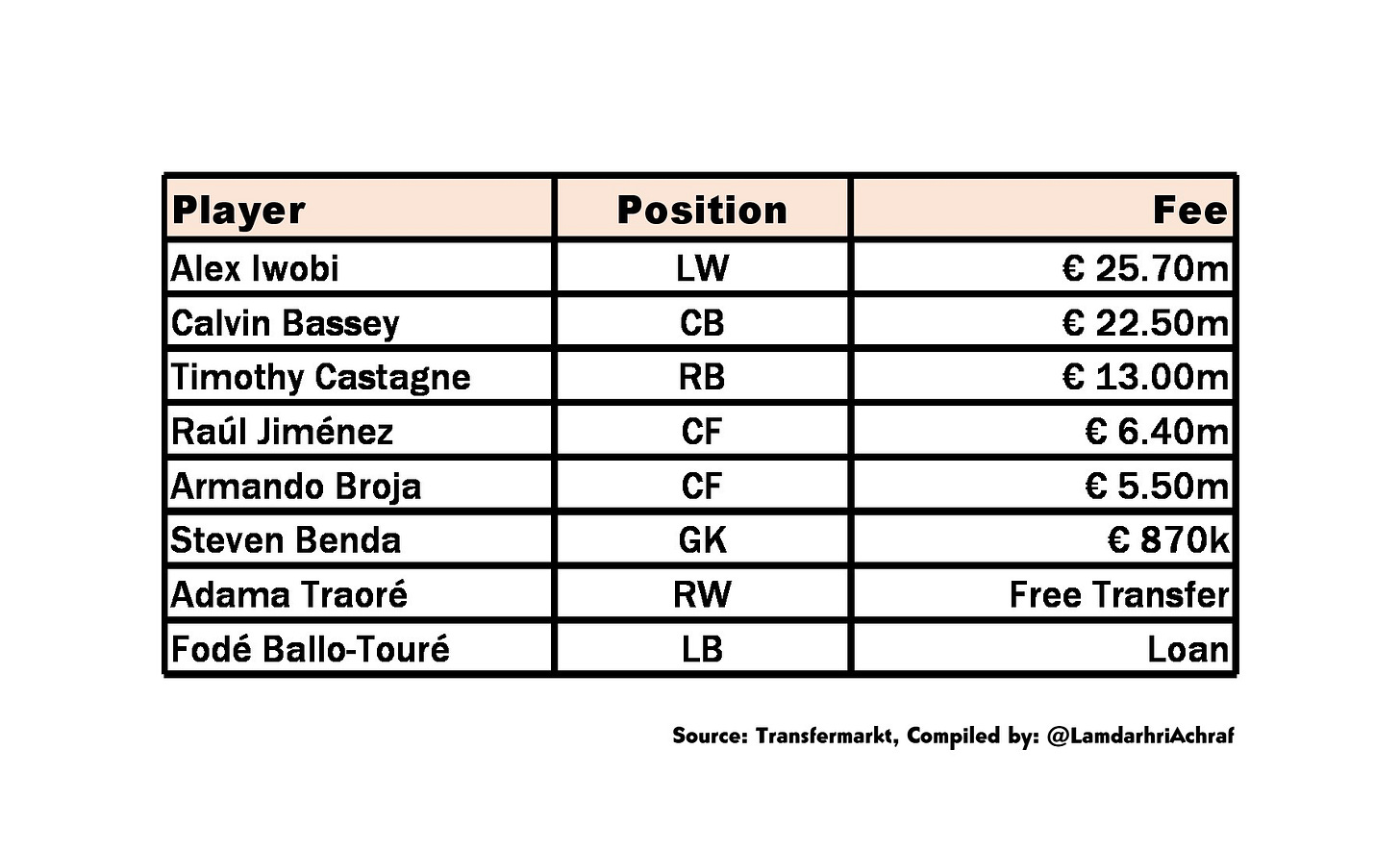
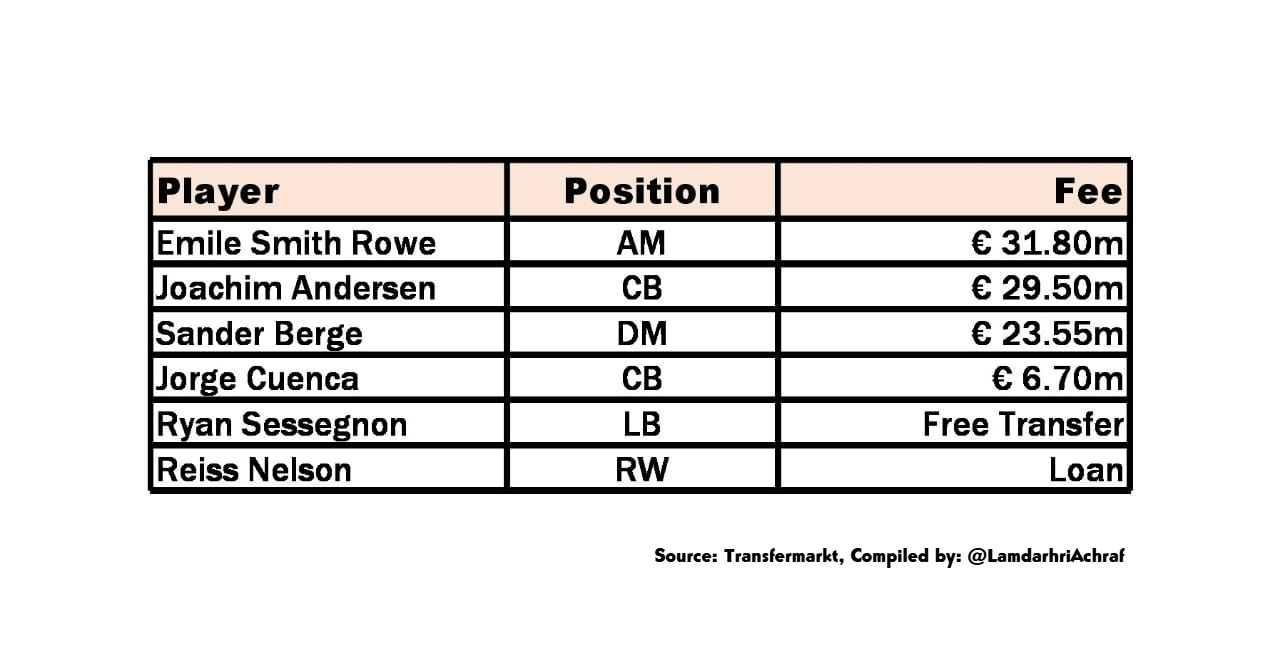

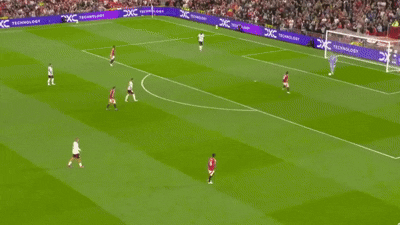
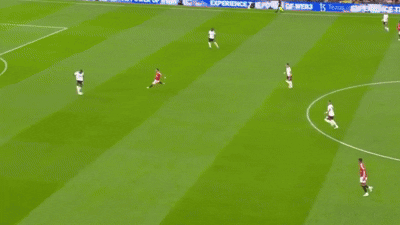



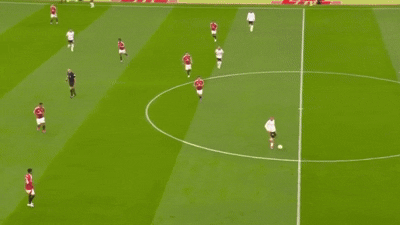


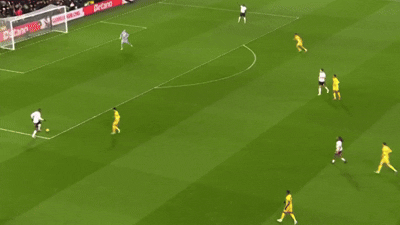



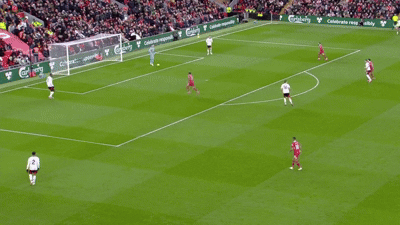















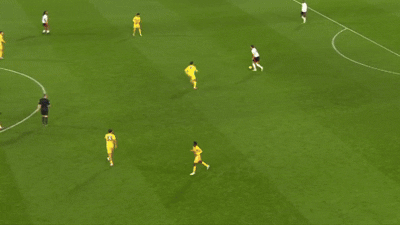



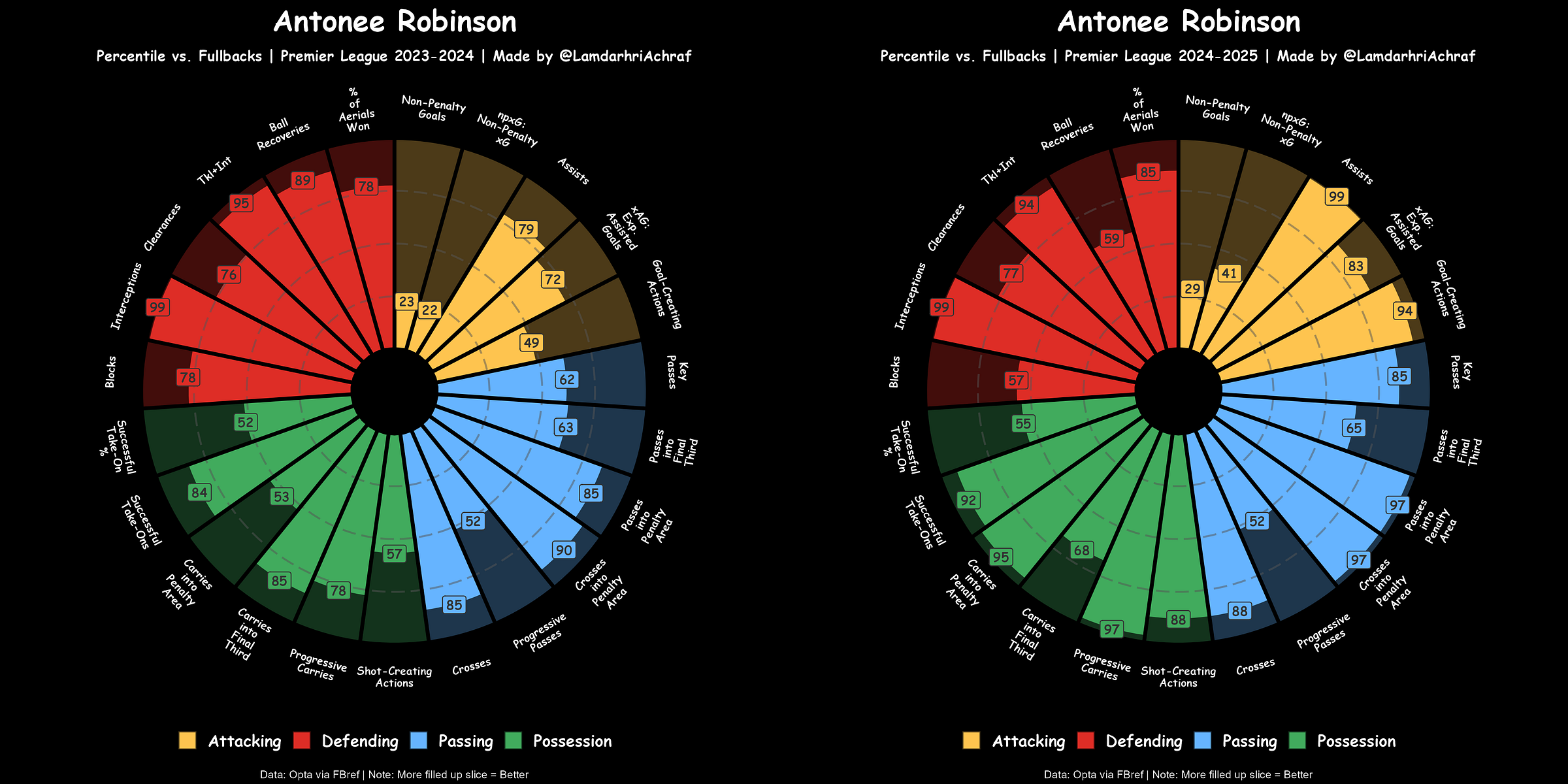


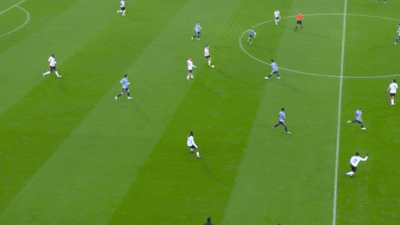






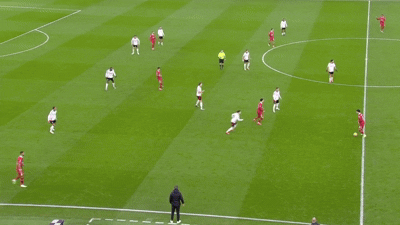


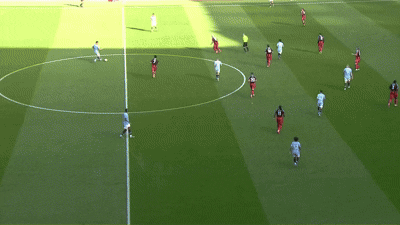

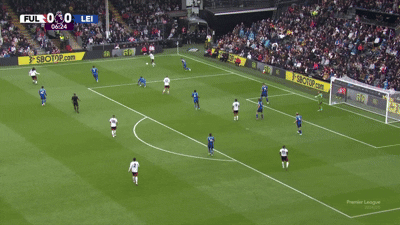


Excellent work, as always. Your effort in putting these pieces together really shows, and it makes for great reading.
Great Great work, your diagrams helped me understand movements better in footy and I was always waiting for a Marco Silva thread, as I really rate him so you killed 2 birds with 1 stone for me. Thanks man
Your introductory quote on the definition of success was also really cool